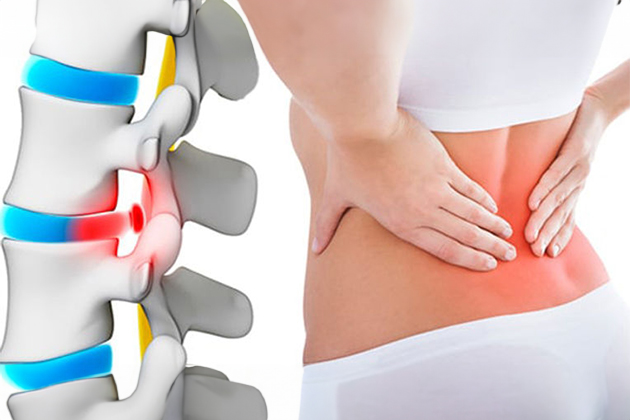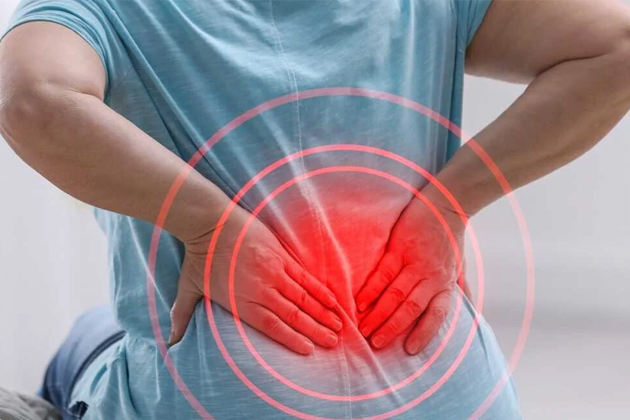
Non-Surgical Solutions for Herniated Disc:
We have compiled non-surgical solutions for herniated disc treatment:
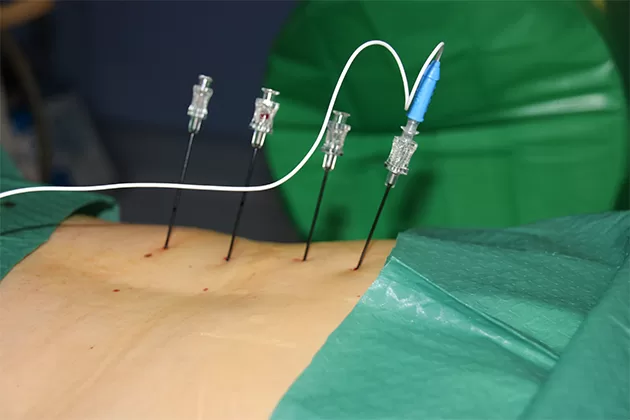
Radiofrequency Thermocoagulation:
Radiofrequency thermocoagulation is a minimally invasive procedure used to treat pain caused by spine issues, such as herniated discs. During the procedure, a needle is inserted through the skin, and the electrode at the tip of the needle is activated by high-frequency radiofrequency energy, destroying the damaged nerve tissue. This prevents the transmission of pain signals from the nerves, helping to relieve pain.
- Usage: Used to treat pain related to spinal issues, especially herniated discs.
- How it works: High-frequency radiofrequency energy destroys damaged nerve tissue, preventing the transmission of pain signals.
- Procedure: A needle is inserted through the skin, making it a minimally invasive procedure.
Transforaminal Injection:
Transforaminal injection is a treatment option used to relieve pain when the nerve roots are irritated due to a herniated disc. During the procedure, a needle is passed through the space between the vertebrae and placed near the nerve roots. Steroid drugs or anesthetics are injected close to the nerve roots, reducing nerve inflammation and relieving pain.
- Usage: Used to relieve pain in cases where nerve roots are irritated, such as in herniated discs.
- How it works: Steroid drugs or anesthetics are injected directly near the nerve roots to reduce nerve inflammation.
- Procedure: A needle is passed through the space between the vertebrae.
Facet Joint Injection:
Facet joint injections are used to relieve pain in the facet joints. These joints between the vertebrae can sometimes become inflamed or irritated. During the procedure, steroid drugs or anesthetics are injected into the damaged facet joint, calming the joint and reducing inflammation.
- Usage: Used to relieve pain in the facet joints.
- How it works: Steroid drugs or anesthetics are injected into the damaged facet joint to reduce inflammation.
- Procedure: Injections are administered to the region where the facet joints are located.
Ozone Therapy:
Ozone therapy involves the use of ozone gas and can help relieve the symptoms of a herniated disc. During the procedure, a thin needle is directed to the problem area in the lower back through the skin. Ozone gas oxygenates the damaged tissue and reduces inflammation, alleviating pain and helping the tissue heal.
- Usage: A treatment method used to relieve the symptoms of a herniated disc.
- How it works: Ozone gas is injected into the problem area, oxygenating the tissue and reducing inflammation to relieve pain.
- Procedure: Performed through the skin.
Alternative Treatment Options:
Some people may try alternative treatments such as acupuncture, chiropractic therapy, or yoga. Herniated disc treatment should be tailored to the patient’s specific condition, and strict adherence to the doctor’s recommendations is essential. Additionally, lifestyle factors such as regular exercise, maintaining good posture, and choosing the right mattress and pillow for spine health play an important role in preventing back pain.
Nucleoplasty Treatment for Herniated Disc and Cervical Disc Herniation
What Are Herniated Disc and Cervical Disc Herniation?
Herniated disc and cervical disc herniation occur when the outer part of the discs (intervertebral discs) between the vertebrae in the lower back or neck weakens or tears, causing the inner part to protrude outward. This condition can compress the nerves, leading to symptoms such as pain, numbness, and weakness.
What is Nucleoplasty?
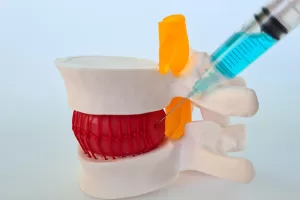
Nucleoplasty is a minimally invasive surgical technique used to treat herniated discs or cervical disc herniation. It involves using radiofrequency energy to precisely reduce the nucleus pulposus tissue, reducing pressure on the compressed nerve roots and the internal disc pressure. This method aims to reduce pressure on the nerves, thereby relieving pain.
Nucleoplasty Procedure:
- Preparation: The patient’s condition is assessed, and necessary imaging tests (MRI, X-ray) are performed.
- Anesthesia: Typically performed under local anesthesia.
- Procedure: A thin needle is guided to the disc area in the lower back using X-ray guidance. Radiofrequency waves are used through the needle to reduce the pressure inside the disc.
- Recovery: Patients are usually discharged shortly after the procedure and can return to daily activities.
Advantages of Nucleoplasty:
- Minimally Invasive: Since no surgical incision is required, recovery time is faster.
- Pain Management: Reduces pressure on the nerves, alleviating pain and other symptoms.
- Lower Risk of Complications: Carries a lower risk of complications compared to traditional surgical methods.
Who is Suitable for Nucleoplasty?
Nucleoplasty is typically suitable for patients suffering from severe pain due to herniated or cervical disc herniation and who have not responded to conservative treatments (physical therapy, medications) for six weeks.
Conclusion:
Nucleoplasty treatment for herniated disc is an effective method to reduce pain and improve the quality of life. However, it is not a suitable solution for every patient. A detailed evaluation and expert opinion are essential in determining the appropriate treatment. Patients’ expectations and health conditions should be considered during the treatment process.
For more information and appointments, please contact Dr. Mustafa Efendioğlu.
Physical therapy is applied to patients with herniated discs to alleviate pain, strengthen muscles, and increase flexibility. Physical therapists prepare personalized exercise programs to ensure proper functioning of the spine and surrounding muscles. This reduces nerve compression and alleviates symptoms.
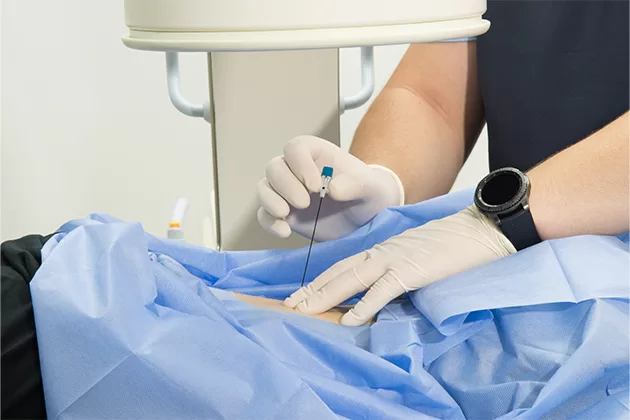 Epidural steroid injections are used to reduce severe pain and inflammation when other treatment methods are insufficient. These injections are applied directly to the nerve roots to alleviate pain and reduce inflammation.
Epidural steroid injections are used to reduce severe pain and inflammation when other treatment methods are insufficient. These injections are applied directly to the nerve roots to alleviate pain and reduce inflammation.
Cold applications are used to reduce acute pain and inflammation, while hot applications are used to relieve muscle spasms and chronic pain. Cold applications numb the nerve endings to reduce pain; hot applications increase blood flow, helping muscles relax.
Acupuncture is a traditional Chinese medicine method involving the insertion of fine needles into specific points. In the treatment of herniated discs, acupuncture stimulates the nervous system to alleviate pain and supports the body’s natural healing processes.
